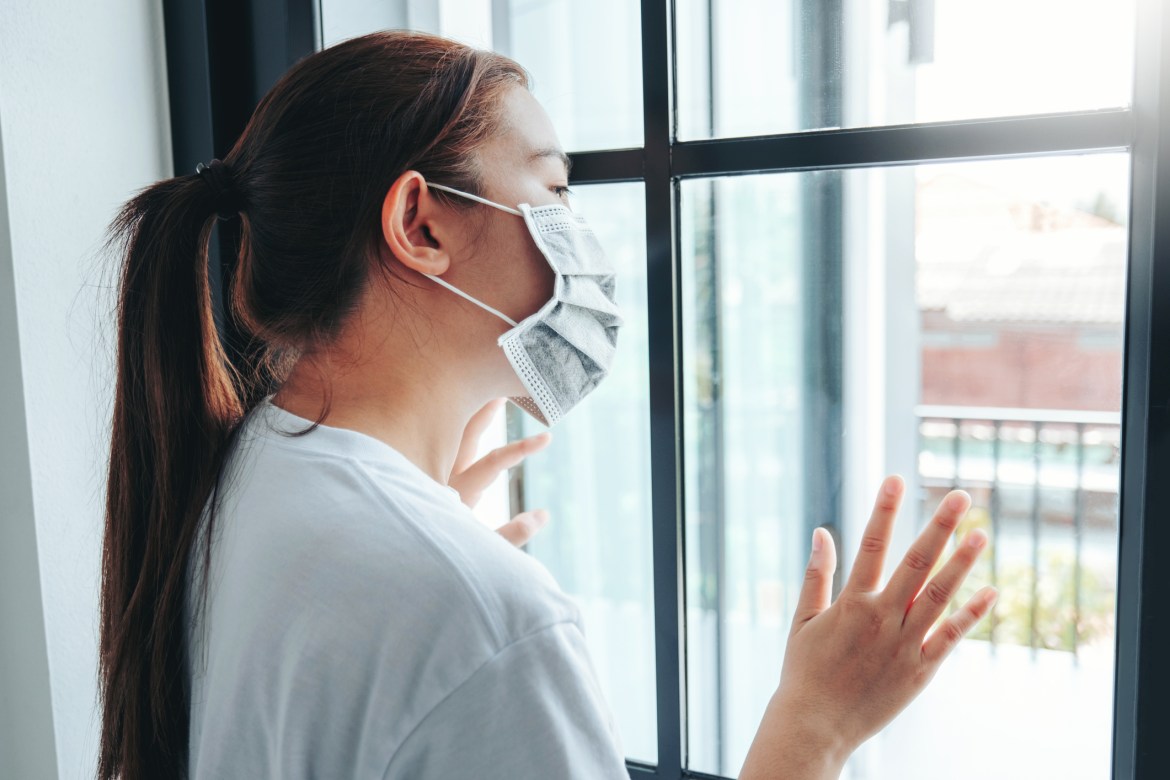When someone in your household contracts the virus, it’s easy to lose sight of what needs to be done. More often than not, a sense of dread and panic can wash over us making it difficult to think straight. But before you allow that to happen, take a moment and ask yourself: “What do I need to do to prevent the coronavirus from taking over my household?”
Remember that time is of the essence here. You need to be able to act quickly in order to protect your loved ones. The very first thing you need to do is to isolate the sick member of the family in one room; and follow these steps:
Avoid contact with the person who is sick.
This is the very first important step that you need to follow. Since the virus is transmitted through respiratory droplets when an infected person coughs, sneezes, or talks, it becomes necessary to limit your contact with him/her. Your infected loved one can also contaminate objects (doorknobs, tables, chairs, etc.), which is why this person should have a bedroom (and bathroom, if possible) that’s completely separate from the other members of the household.
In case you don’t have a separate isolation room for your sick member, you can improvise and have those members who aren’t infected stay in an area of your house, such as the living room, for the time being. It’s crucial that you isolate the sick member in one room only as soon as possible to prevent the spread of the virus.
Designate separate items for the infected member.
You should not be sharing any item with the sick person in your family. They must have their own set of utensils, plate, glass, and other personal items. This should also be the case for their clothes and beddings. The main goal is to avoid any transmission of the virus through the objects. You can have a system where the infected member leaves their items outside their door so no one has to go inside his/her room.
When handling their items, always make sure you’re wearing gloves and a mask and avoid touching your eyes, nose, or mouth. The same goes for when you’re cleaning them with soap and hot water. You should wash the sick member’s items separate from everyone else’s laundry or dishes. Remember to wash your hands thoroughly after taking off these gloves.
Wear a mask at all times.
You might think that you’ll only need to wear a mask when you’re entering the room of your sick member. However, you or anyone else at home have no way of knowing whether you’ve already been exposed to the virus. Basically, the rule of thumb here is to assume that everyone else in the household is infected.
In addition to the infected person, every member should wear a mask. The mask functions in two ways—to keep anyone infected from spreading the virus and to protect those who do not have the virus from getting infected. For good measure, it’s wise to practice social distancing or maintaining at least a six-foot distance when interacting with one another.
Wash your hands as often as possible.
The key to fighting the spread of the virus is by consistent handwashing. Whenever you touch any object or surface, regardless of whether it’s inside the infected person’s room or not, make it a point to wash your hands for at least 20 seconds with antibacterial soap and water.
You can also have alcohols or hand sanitizers positioned around the house for easier access. The alcohol or hand sanitizer must be applied generously around your hands.
Regularly disinfect commonly used objects or surfaces around your home.
Infection can happen when you touch an object or surface – which a sick member has coughed on, sneezed on, or touched – then you touch your eyes, nose, or mouth. Cleaning surfaces and objects that members of the family are commonly in contact with at home help reduce the risk of the virus spreading. This is especially important when the sick member and other people in the household are only using one bathroom.
When doing this, it’s best to have a disinfectant or detergent ready to help kill the germs and virus. Be as thorough as possible. Take into account every nook and cranny that most members of the family touch like switches, doorknobs, tables, sinks, cabinets, or faucet handles. There’s no such thing as being too careful when it involves the coronavirus.
Monitor yourself for symptoms.
Remember that symptoms of having COVID-19 include fever, cough, fatigue, body ache, loss of taste or smell, nausea, diarrhea, and experiencing difficulty in breathing. Take note of your temperature and vital signs several times a day.
If you’re experiencing mild symptoms, make sure to isolate yourself immediately from the rest of the household. In the case that your symptoms worsen, call your doctor as soon as possible.
Stay at home.
We cannot stress this even more. Being in close contact with someone who has COVID-19 should be reason enough to stay home. Why? For all you know, you could be carrying the virus with you when you go to work or the supermarket. Even without exhibiting the symptoms, it is possible for you to transmit the virus to other people.
Be honest when informing your supervisors about the situation at home and ask for some consideration to work from home. Instead of going out to buy food or groceries, use a delivery app so that these can be dropped off at your doorstep. The only way to prevent the virus from further spreading is having the initiative to quarantine yourself from everyone else.
With the COVID-19 cases continuously multiplying by the day, it’s essential to have a game plan in the event that someone at home contracts the virus. Make sure to keep these helpful tips in mind! Together, let’s stay safe and stay Smart.



